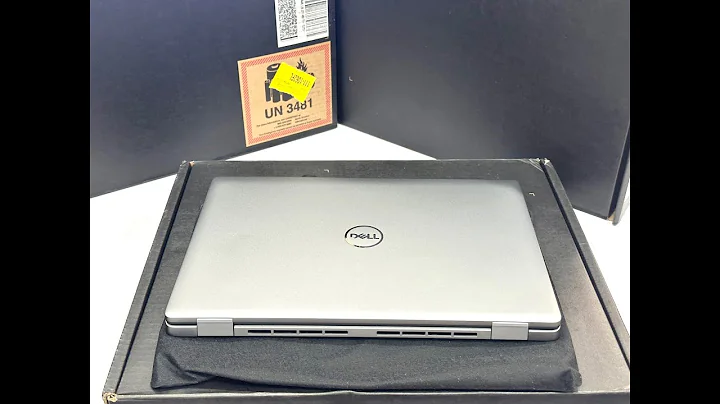AMD's Frontier Supercomputer: Shattering the Exaflops Barrier
Table of Contents
- Introduction
- AMD's Frontier Supercomputer: The First Exaflop Supercomputer
- The Challenges Faced by China's Supercomputers
- The Architecture and Performance of AMD's Frontier
- The Power Efficiency of AMD's Frontier
- AMD's Dominance in the Green 500
- Intel's Aurora: The Long-Awaited Supercomputer
- The Delay and Potential of Intel's Aurora
- The Revolutionary Packaging Technology of Rialto Bridge
- NVIDIA's Alps and Venato: The Future of Supercomputing
- The Promise and Challenges of Quantum Computers
- The Implications for Weather Prediction and More
Introduction
In the realm of supercomputers, recent developments have captured the attention of tech enthusiasts and researchers alike. From AMD's impressive Frontier supercomputer to Intel's long-awaited Aurora, the landscape of supercomputing is experiencing significant advancements. Additionally, NVIDIA is making strides with their AI-focused Alps and Vanato supercomputers, while the potential of quantum computers looms on the horizon.
AMD's Frontier Supercomputer: The First Exaflop Supercomputer
AMD's Frontier supercomputer has made waves as the first supercomputer to achieve exaflop performance in the Linpack benchmark. This milestone is significant due to the unique design of Frontier and its superiority over previous supercomputers, even those produced by China. Despite political tensions, AMD has managed to push the boundaries of performance and efficiency with Frontier.
The Challenges Faced by China's Supercomputers
China's supercomputers, such as the Tianhe-3 and Sunway TaihuLight, have faced criticism due to their specialized design that sacrifices general-purpose capabilities. While they were rumored to have surpassed the exascale barrier, China's supercomputers have not officially achieved this feat. Political tensions and concerns of being blacklisted have further complicated China's involvement in the global supercomputer landscape.
The Architecture and Performance of AMD's Frontier
AMD's Frontier supercomputer stands out for its unprecedented performance and architecture. With sustained performance capabilities and direct water cooling, Frontier has proven to be the most power-efficient supercomputer in history. Its potential for further enhancement and the integration of software tweaks make it a frontrunner in the supercomputing world.
The Power Efficiency of AMD's Frontier
One of the key factors contributing to AMD's success with Frontier is its power efficiency. By utilizing direct water cooling at a temperature of 68°C, Frontier minimizes energy consumption while maintaining optimal performance. The inclusion of chillers allows for even greater performance gains, leading to its position as the most power-efficient supercomputer to date.
AMD's Dominance in the Green 500
AMD's success extends beyond Frontier, as their architecture, namely the Radeon Instinct series, has dominated the Green 500 list. With 17 out of the top 20 most power-efficient supercomputers relying on AMD's GPUs, the landscape has shifted significantly. This shift highlights AMD's prowess in power efficiency and its ability to outperform competitors like NVIDIA.
Intel's Aurora: The Long-Awaited Supercomputer
Intel's Aurora supercomputer has been plagued by delays, leading to skepticism surrounding its eventual launch. However, recent updates indicate that it is nearing completion, with the installation process underway. Aurora holds great promise as it combines Intel's Ponte Vecchio GPUs with Sapphire Rapids CPUs, making it a significant player in the supercomputing scene.
The Delay and Potential of Intel's Aurora
Despite the delays faced by Intel's Aurora, the supercomputer is anticipated to deliver outstanding performance and become the fastest in the world. The integration of next-generation technology, including silicon photonics and improved memory capabilities, will contribute to its success. However, Intel must overcome the challenges posed by the repeated delays in order to establish its dominance.
The Revolutionary Packaging Technology of Rialto Bridge
Intel's packaging technology, called Rialto Bridge, offers significant advancements in supercomputing. With the ability to house a large number of dense components in a 1U chassis, Rialto Bridge paves the way for increased performance and efficiency. Its liquid cooling system and optimized design make it a revolutionary breakthrough in the industry.
NVIDIA's Alps and Venato: The Future of Supercomputing
NVIDIA is making significant strides in the supercomputing arena with their upcoming Alps and Vanato systems. These supercomputers leverage NVIDIA's groundbreaking Grace architecture, which combines CPUs and GPUs for optimal performance. While the exact specifications and performance metrics are still under wraps, NVIDIA aims to revolutionize AI computing with these powerful machines.
The Promise and Challenges of Quantum Computers
Quantum computers Present both promise and challenges in the field of supercomputing. While they are not yet at the Scale of traditional supercomputers, researchers are making strides in harnessing the power of quantum technology. Quantum computers offer the potential for exponentially faster computations, but their intricate design and unique programming requirements present significant hurdles to overcome.
The Implications for Weather Prediction and More
The advancements in supercomputing have profound implications for various fields, including weather prediction. The increased precision and efficiency of supercomputers enable more accurate forecasts, potentially saving lives during severe weather events. Furthermore, the development of quantum-resistant encryption algorithms ensures the security and privacy of sensitive information.
In conclusion, the world of supercomputing is experiencing remarkable advancements, thanks to the groundbreaking technologies and architectures introduced by industry leaders like AMD, Intel, and NVIDIA. As these powerful machines continue to evolve, they hold the potential to transform industries and drive progress in scientific research and technological innovation.
Sources:
Highlights
- AMD's Frontier supercomputer achieves exaflop performance, surpassing previous milestones in the field.
- China's supercomputers face challenges due to specialized designs and political tensions.
- Intel's Aurora supercomputer faces delays but promises significant performance gains with advanced technologies.
- NVIDIA's upcoming Alps and Venato supercomputers leverage powerful CPU-GPU architectures for enhanced AI compute.
- Quantum computers pose both promise and challenges, with potential breakthroughs in computation and encryption.
FAQ
Q: How does AMD's Frontier supercomputer compare to other supercomputers?
A: AMD's Frontier is the first supercomputer to achieve exaflop performance in the Linpack benchmark, surpassing previous milestones.
Q: What challenges do China's supercomputers face?
A: China's supercomputers often rely on specialized designs and face political tensions that limit their recognition and potential advancements.
Q: What is the power efficiency of AMD's Frontier supercomputer?
A: AMD's Frontier is the most power-efficient supercomputer to date, utilizing direct water cooling and reaching sustained performance levels with minimal energy consumption.
Q: When will Intel's Aurora supercomputer be launched?
A: Intel's Aurora supercomputer has faced delays but is currently undergoing the installation process, with the potential to become the fastest supercomputer in the world.
Q: How are NVIDIA's Alps and Venato supercomputers different from previous offerings?
A: NVIDIA's Alps and Venato supercomputers leverage the revolutionary Grace architecture, combining CPUs and GPUs for enhanced AI computing capabilities.
Q: What is the potential of quantum computers in the supercomputing field?
A: Quantum computers hold promise for exponentially faster computations and advancements in encryption, but their implementation and programming pose significant challenges.
Q: How do supercomputers impact weather prediction?
A: Supercomputers with increased precision and efficiency enable more accurate weather forecasts, leading to improved safety measures during severe weather events.
Q: What are the highlights of recent advancements in the supercomputing field?
A: Recent advancements include AMD's milestone-breaking performance, Intel's revolutionary packaging technology, and NVIDIA's innovations in CPU-GPU architectures.
 WHY YOU SHOULD CHOOSE TOOLIFY
WHY YOU SHOULD CHOOSE TOOLIFY


































